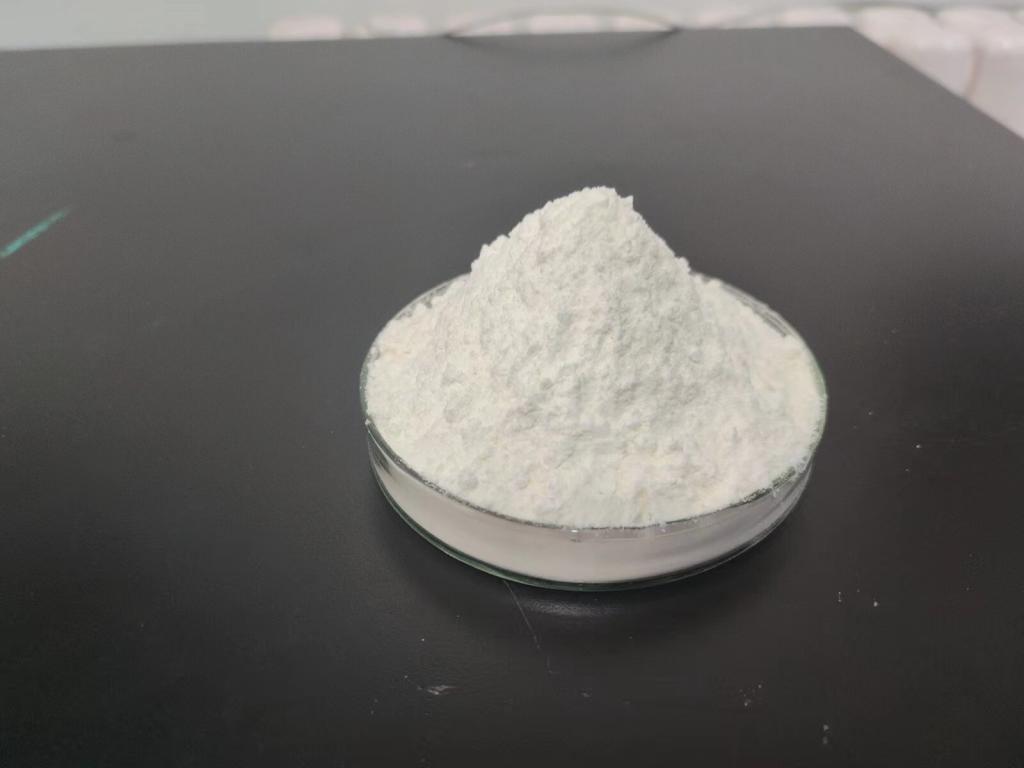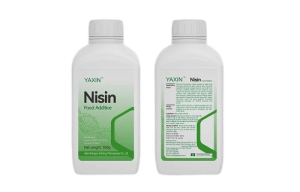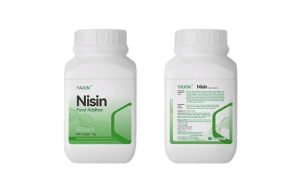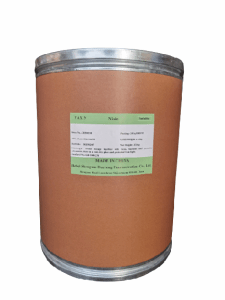Tel:+8618231198596

News
 CONTACT
CONTACT
 CONTACT
CONTACT
- Linkman:Linda Yao
- Tel: +8618231198596
- Email:linda.yao@dcpharma.cn
- Linkman:CHARLES.WANG
- Department:Overseas
- Tel: 0086 0311-85537378 0086 0311-85539701
News
ε-Polylysine hydrochloride’s role in ensuring the safety of chilled ready-to-cook meal kits
TIME:2024-12-04
What is ε-Polylysine Hydrochloride?
ε-Polylysine is a polycationic antimicrobial peptide consisting of a polymer chain of lysine, an amino acid. It is produced by the fermentation of Streptomyces albulus and is known for its ability to inhibit the growth of a broad range of microorganisms, including bacteria, fungi, and yeasts. As a natural preservative, ε-Polylysine hydrochloride is gaining popularity in food preservation due to its effectiveness against foodborne pathogens, its safety profile, and its clean-label appeal. It has been recognized by regulatory authorities such as the U.S. Food and Drug Administration (FDA) and the European Food Safety Authority (EFSA) as safe for use in food applications.
Challenges in Preserving Chilled Ready-to-Cook Meal Kits
Chilled ready-to-cook meal kits typically contain fresh vegetables, proteins (e.g., meat, fish, or tofu), grains, and sauces, all of which need to be preserved effectively to ensure food safety and freshness. Several challenges are associated with preserving these meal kits:
Microbial Contamination
The perishable nature of ingredients in meal kits makes them vulnerable to microbial contamination. Common pathogens like Salmonella, Listeria monocytogenes, and Escherichia coli can proliferate in chilled conditions, posing a serious risk to food safety. Ensuring that the kits remain free from harmful microorganisms throughout storage and transportation is essential to prevent foodborne illnesses.
Shelf Life
Chilled meal kits typically have a short shelf life due to the high moisture content of many of their ingredients, which creates an ideal environment for microbial growth. Additionally, the perishability of fresh ingredients, such as meats, seafood, and vegetables, makes it difficult to extend the shelf life of these products without compromising quality.
Texture and Quality Maintenance
In addition to microbial spoilage, the integrity of the meal kit's texture and flavor is crucial to its appeal. Over time, fresh ingredients can deteriorate in terms of texture and flavor, leading to a decline in consumer satisfaction. Preservation methods must, therefore, not only ensure food safety but also maintain the quality of the food.
Regulatory Compliance
Food safety regulations require that chilled meal kits meet strict hygiene standards to minimize the risk of contamination. Compliance with these standards is essential for manufacturers to ensure product safety and avoid costly recalls or public health issues.
How ε-Polylysine Hydrochloride Enhances Safety in Meal Kits
Antimicrobial Action
The most significant benefit of ε-Polylysine hydrochloride in chilled meal kits is its antimicrobial properties. By inhibiting the growth of a wide range of bacteria, molds, and yeasts, ε-Polylysine can reduce the risk of spoilage and contamination in the fresh ingredients. It is particularly effective against gram-positive bacteria, including Listeria monocytogenes and Staphylococcus aureus, which are common pathogens found in meat and dairy products. By controlling these microorganisms, ε-Polylysine helps ensure that the meal kits remain safe for consumption throughout their shelf life.
Extended Shelf Life
ε-Polylysine hydrochloride can significantly extend the shelf life of chilled ready-to-cook meal kits. By controlling microbial growth, it slows down the degradation of fresh ingredients, allowing them to stay fresh for longer periods. This extension of shelf life is especially beneficial for products with short shelf lives, such as fresh seafood or meats, reducing the need for frequent production and distribution cycles.
Preservation of Sensory Properties
In addition to its antimicrobial effects, ε-Polylysine hydrochloride does not alter the sensory properties of food, such as taste, texture, or color. This makes it ideal for use in chilled meal kits, where the quality of ingredients is a primary concern. The preservation of these sensory attributes ensures that consumers enjoy the intended eating experience, even with extended storage.
Natural and Clean-Label Appeal
As consumers increasingly seek clean-label products, ε-Polylysine hydrochloride offers a natural, safe alternative to synthetic preservatives. It aligns with the growing trend toward minimal processing and transparent labeling, making it an attractive option for meal kit manufacturers targeting health-conscious consumers. ε-Polylysine’s natural origin also supports the clean-label movement, which favors foods with fewer artificial additives and chemicals.
Effective at Low Concentrations
One of the advantages of ε-Polylysine hydrochloride is that it is effective at very low concentrations. This makes it suitable for use in chilled meal kits without negatively affecting the flavor or texture of the ingredients. The low concentrations required for efficacy also make it cost-effective, providing a sustainable solution for food preservation.
Applications of ε-Polylysine Hydrochloride in Chilled Meal Kits
Meat and Poultry
Chilled ready-to-cook meal kits often contain fresh meat or poultry, which are highly susceptible to contamination by pathogens such as Salmonella and Campylobacter. The incorporation of ε-Polylysine hydrochloride into the meat or poultry packaging or as part of a marinade can help ensure microbial safety, allowing these products to stay fresh and safe for longer periods.
Seafood
Fresh seafood is another ingredient commonly found in chilled meal kits, and it is particularly prone to spoilage due to its high water content and perishable nature. Applying ε-Polylysine hydrochloride to seafood products can reduce microbial growth, prevent spoilage, and extend the shelf life of these ingredients.
Vegetables and Fruits
While vegetables and fruits are generally considered less risky in terms of foodborne pathogens, they can still be contaminated with molds or yeasts, particularly in wet or cut forms. ε-Polylysine hydrochloride can be applied to these ingredients to reduce the likelihood of spoilage and maintain their freshness, color, and texture.
Sauces and Dressings
Sauces and dressings, often containing dairy or oil, are a common component of ready-to-cook meal kits. These products can harbor bacteria and fungi if not properly preserved. ε-Polylysine hydrochloride can be used in these products to prevent microbial growth, ensuring their safety and stability throughout the shelf life of the meal kit.
Challenges and Future Directions
While the potential of ε-Polylysine hydrochloride in chilled meal kits is clear, several challenges remain:
Optimization of Application
The concentration of ε-Polylysine hydrochloride must be carefully optimized for different ingredients in meal kits to ensure maximum effectiveness without compromising flavor, texture, or overall consumer satisfaction.
Consumer Perception
Despite its natural origin, some consumers may still be skeptical about the use of any preservative, even one derived from nature. Educating consumers about the safety and benefits of ε-Polylysine hydrochloride, particularly in clean-label applications, will be crucial for its widespread acceptance.
Regulatory Approvals
The use of ε-Polylysine hydrochloride in chilled meal kits must meet regulatory requirements for food safety and preservation. Manufacturers will need to ensure that they comply with local and international standards before using this preservative in their products.
Conclusion
ε-Polylysine hydrochloride offers a promising solution for ensuring the safety and extending the shelf life of chilled ready-to-cook meal kits. Its potent antimicrobial properties, combined with its ability to preserve the sensory qualities of food, make it an ideal choice for manufacturers looking to enhance the safety, quality, and consumer appeal of their products. As consumer demand for clean-label, natural preservatives grows, ε-Polylysine hydrochloride is poised to become an essential tool in the preservation of chilled meal kits, meeting both food safety requirements and consumer expectations for healthy, convenient, and high-quality meals.
- Tel:+8618231198596
- Whatsapp:18231198596
- Chat With Skype







